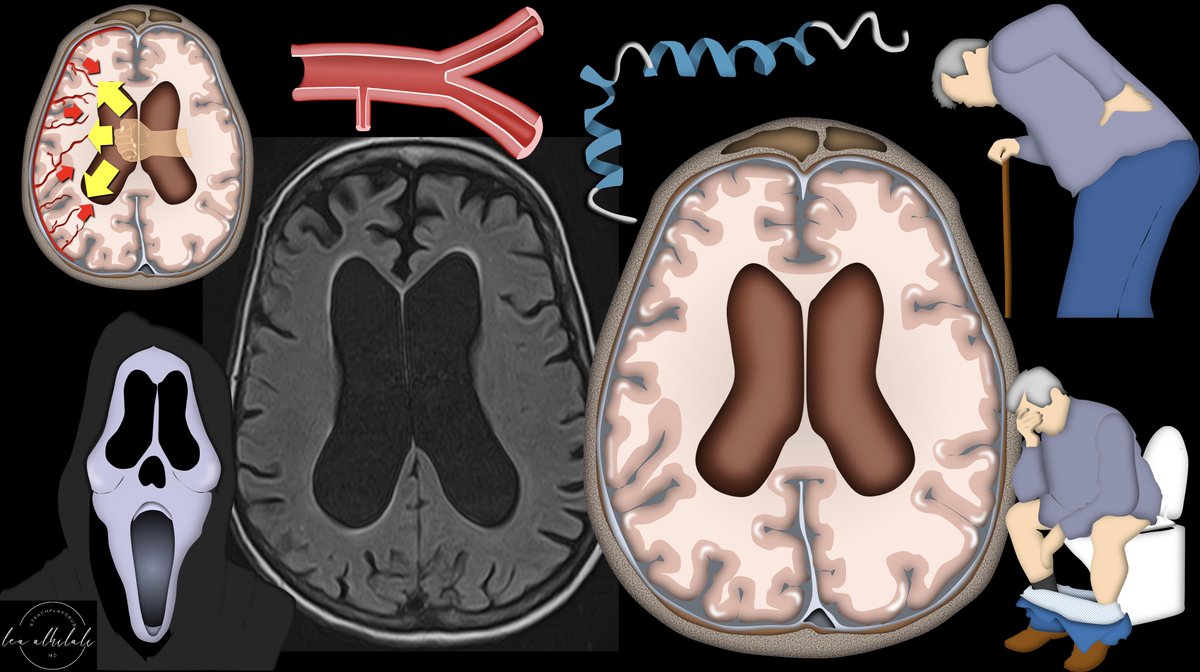1/Don't fall for the siren song of calling all bright round objects at foramen of Monro colloid cysts. Like a true siren song, this may be a trap!
A🧵about lesions in this region that can trap you
#medtwitter #FOAMed #FOAMrad #medstudent #neurorad #radres #meded #Neurosurgery
A🧵about lesions in this region that can trap you
#medtwitter #FOAMed #FOAMrad #medstudent #neurorad #radres #meded #Neurosurgery

2/Here are 3 lesions, all round and bright and in the region of the foramen of Monro. Can you tell from the images which is a colloid cyst and which may be something else? Choose which one or ones you think are a colloid cyst 

Choose which one you think is a colloid cyst
4/In this case it was A. B was a tortuous basilar and C was a cavernoma of the chiasm/hypothalamus that had bled and projected into the third ventricle. 

5/Many lesions may mimic a colloid cyst at the foramen of Monro. Below is a list, but it is by no means exhaustive. So with so many mimickers, how can you know when to call a colloid cyst? 

6/They say location is everything--especially in colloid cysts. 99% of them are located at the foramen of Monro, so if it isn't at the foramen, be suspicious that it isn't a colloid cyst 

7/Another feature that makes it special is actually how few special features it has! It should be very featureless. Many imaging findings we use to characterize lesions (enhancement, calcification, diffusion restriction), should all be absent in a colloid cyst 

8/I remember this bc colloid cysts are kind of cousins to other midline congenital cysts (Rathke's cyst & Thornwaldt cyst) & they behave similarly. So if there's a feature that would be weird in a Rathke's or Thornwald cyst (calcs, enhancement), it's weird for a colloid cyst 

9/But recognizing a colloid cyst isn't enough. There are important things to mention in your report. You should mention anatomic variants of the septum & fornix that could affect the surgical approach. Also mention low T2 signal, as these cysts can be more difficult to resect 

10/Another important issue is where along the 3rd ventricle the cyst extends. Zone 1 is anterior to the mass intermedia, Zone 2 is behind Zone 1 but anterior to the aqueduct, and Zone 3 is behind Zone 2. Zones 1 & 3 are higher risk 

11/I hate it when classifications don't go in order. I want Zone 1 to be lowest risk and Zone 3 highest. I hate it when there is a sine wave of risk in the classification 

12/But you can remember this by remembering that there are openings at the anterior & posterior 3rd ventricle. So anteriorly you are at risk of obstructing the foramen & posteriorly the aqueduct. Zone 2 is just the zone sandwiched between to the two openings, so it is low risk. 

13/So remember, there are mimics of colloid cysts all around. So look at the imaging findings, instead of listening to the siren song!
• • •
Missing some Tweet in this thread? You can try to
force a refresh






















